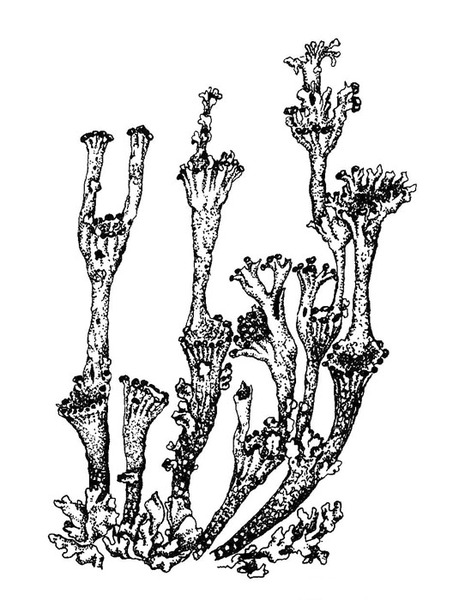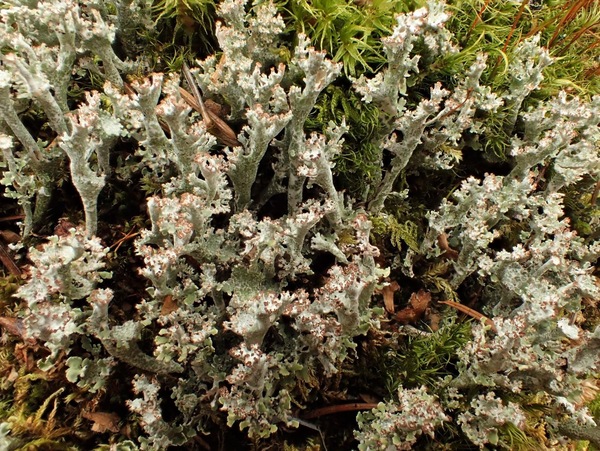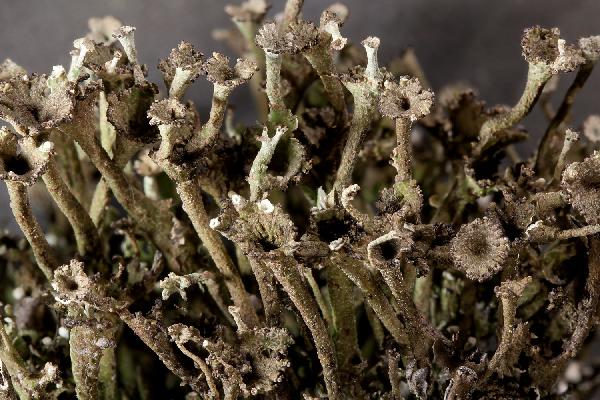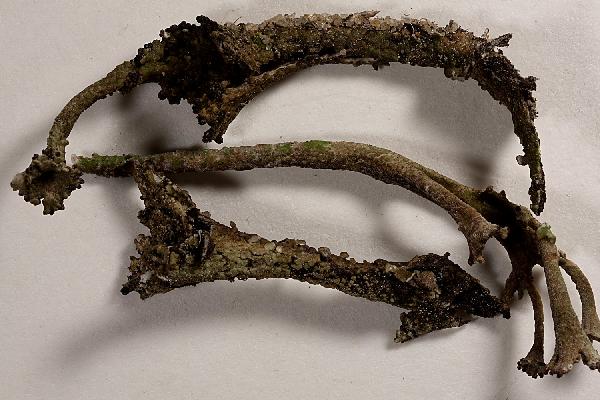Cladonia phyllophora Hoffm.
Deutschl. Fl., 2: 123, 1796.
Synonyms: Cladonia degenerans (Flörke) Spreng.; Cladonia lepidota Nyl. non auct.
Distribution: N - Frl (TSB 20592), Ven (Nascimbene & Caniglia 2003c), TAA (Nascimbene & al. 2022), Lomb (Rivellini & Valcuvia 1996, Rossi & al. 1998, Valcuvia & al. 2000d, Gheza & al. 2022), Piem (Isocrono & al. 2004, Isocrono & Piervittori 2008), VA (Piervittori & Isocrono 1999, Isocrono & al. 2008), Emil (Fariselli & al. 2020), Lig (Brunialti & al. 1999, Gheza & al. 2020). C - Tosc.
Description: Primary thallus squamulose, persistent or usually disappearing, the squamules small to middle-sized, 2-5 mm long (rarely more), up to 4 mm broad (usually less), more or less round, crenate to incised, ascending, glaucescent above, white beneath. Podetia to 5(-8) cm tall (usually much less) and up to 4 mm thick, hollow inside, with irregular, 1-3 mm wide, usually closed cups which often proliferate marginally, the margins often squamulose, grey, brownish grey or dark brown in exposed situations, the base strongly melanotic also in the medulla (in upper basal parts black interspaces are visible between the cortical areoles), with a subarachnoid surface (the part between corticate areolae is ecorticate and subtomentose), variously squamulose. Apothecia rather rare, brown, convex, on the tips of the proliferations. Asci 8-spored, clavate, thickened at apex, with a K/I+ blue tholus and a K/I+ strongly blue outer gelatinous sheath, Cladonia-type. Ascospores 1-celled, hyaline, ellipsoid. Pycnidia dark brown, semi-immersed on the margins of cups or on the proliferations, with a colourless jelly. Conidia hyaline, curved. Photobiont chlorococcoid. Spot tests: K- or K+ yellowish slowly turning brown, C-, KC-, P+ red, UV-. Chemistry: fumarprotocetraric acid complex, rarely zeorin and traces of an unknown compound.Note: a cool-temperate to boreal-montane, probably holarctic lichen found on acid mineral soil. Records from Southern Italy (see Nimis 1993: 239), being dubious, are not accepted here.
Growth form: Fruticose
Substrata: soil, terricolous mosses, and plant debris
Photobiont: green algae other than Trentepohlia
Reproductive strategy: mainly sexual
Commonnes-rarity: (info)
Alpine belt: extremely rare
Subalpine belt: rare
Oromediterranean belt: very rare
Montane belt: rare
Submediterranean belt: extremely rare
Padanian area: absent
Humid submediterranean belt: extremely rare
Humid mediterranean belt: absent
Dry mediterranean belt: absent
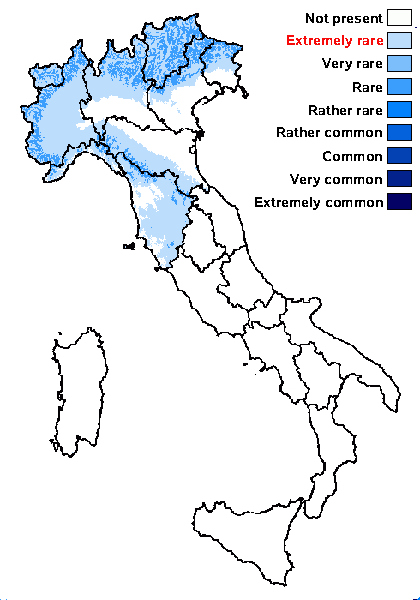
Predictive model
Herbarium samples
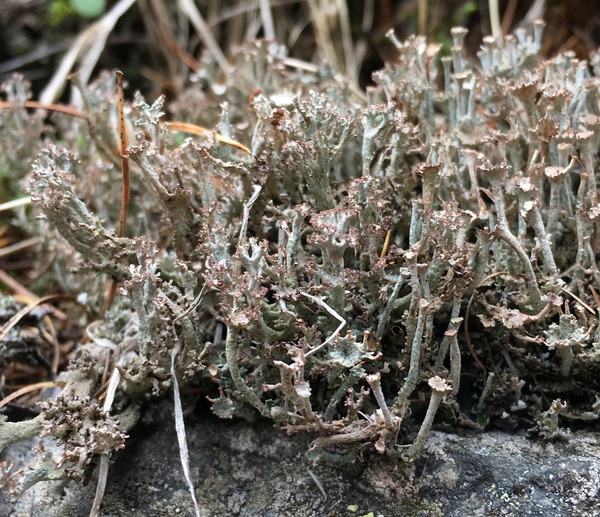
Gabriele Gheza - https://lichenidilombardia.home.blog
Italy, Lombardia, Sondrio, Valdidentro, 1750 m
08/2017
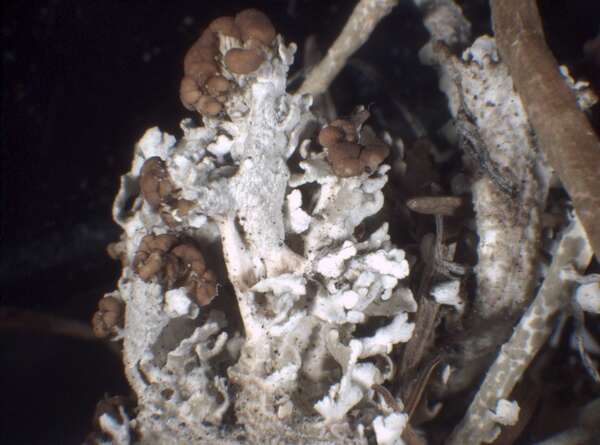

P.L. Nimis; Owner: Department of Life Sciences, University of Trieste
Herbarium: TSB (20592)
2003/02/15


Curtis Randall Björk – CC BY-SA 4.0
British Columbia, Clearwater Valley Date: 2010-11-01 On tussock in fen
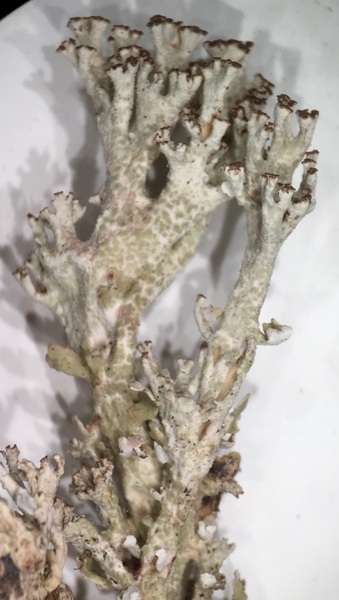
Gabriele Gheza - https://lichenidilombardia.home.blog
Italy, Lombardia, Sondrio, Valdidentro, 1750 m
08/2017
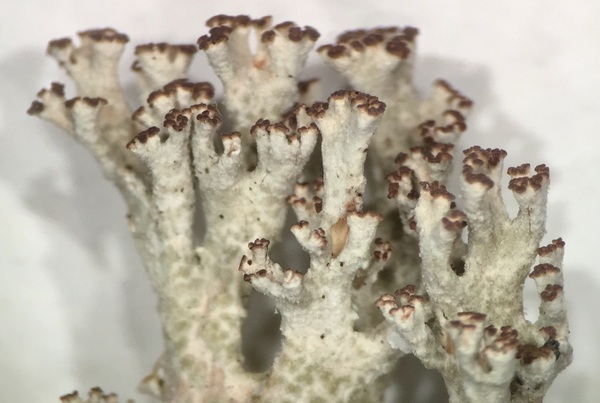
Gabriele Gheza - https://lichenidilombardia.home.blog
Italy, Lombardia, Sondrio, Valdidentro, 1750 m
08/2017
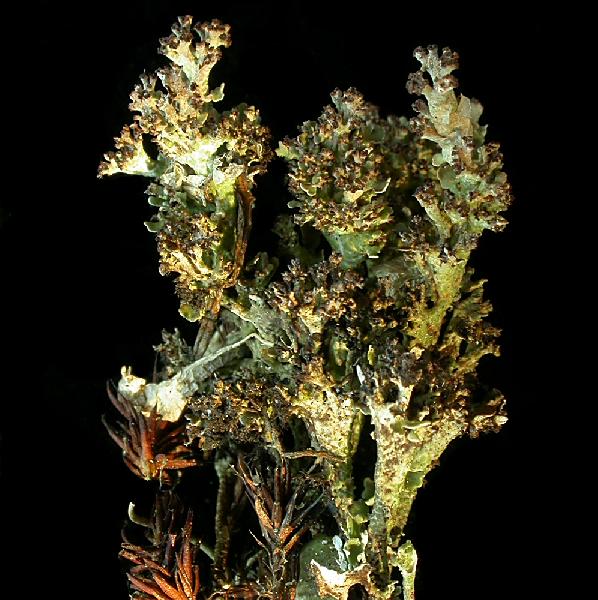
Ulrich Kirschbaum CC BY-SA 4.0 - Source: https://www.thm.de/lse/ulrich-kirschbaum/flechtenbilder
Central Europe; Germany: Hesse. (Coll/ident: Eichler/Cezanne).
Growth form: Fruticose
Substrata: soil, terricolous mosses, and plant debris
Photobiont: green algae other than Trentepohlia
Reproductive strategy: mainly sexual
Commonnes-rarity: (info)
Alpine belt: extremely rare
Subalpine belt: rare
Oromediterranean belt: very rare
Montane belt: rare
Submediterranean belt: extremely rare
Padanian area: absent
Humid submediterranean belt: extremely rare
Humid mediterranean belt: absent
Dry mediterranean belt: absent

Predictive model
| Herbarium samples |

Gabriele Gheza - https://lichenidilombardia.home.blog
Italy, Lombardia, Sondrio, Valdidentro, 1750 m
08/2017


P.L. Nimis; Owner: Department of Life Sciences, University of Trieste
Herbarium: TSB (20592)
2003/02/15


Curtis Randall Björk – CC BY-SA 4.0
British Columbia, Clearwater Valley Date: 2010-11-01 On tussock in fen

Gabriele Gheza - https://lichenidilombardia.home.blog
Italy, Lombardia, Sondrio, Valdidentro, 1750 m
08/2017

Gabriele Gheza - https://lichenidilombardia.home.blog
Italy, Lombardia, Sondrio, Valdidentro, 1750 m
08/2017

 Index Fungorum
Index Fungorum
 GBIF
GBIF
